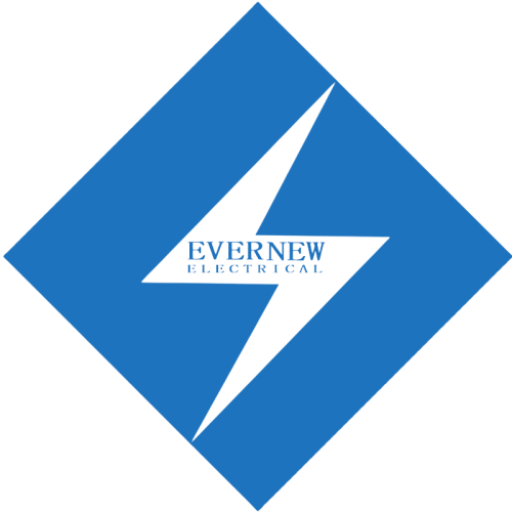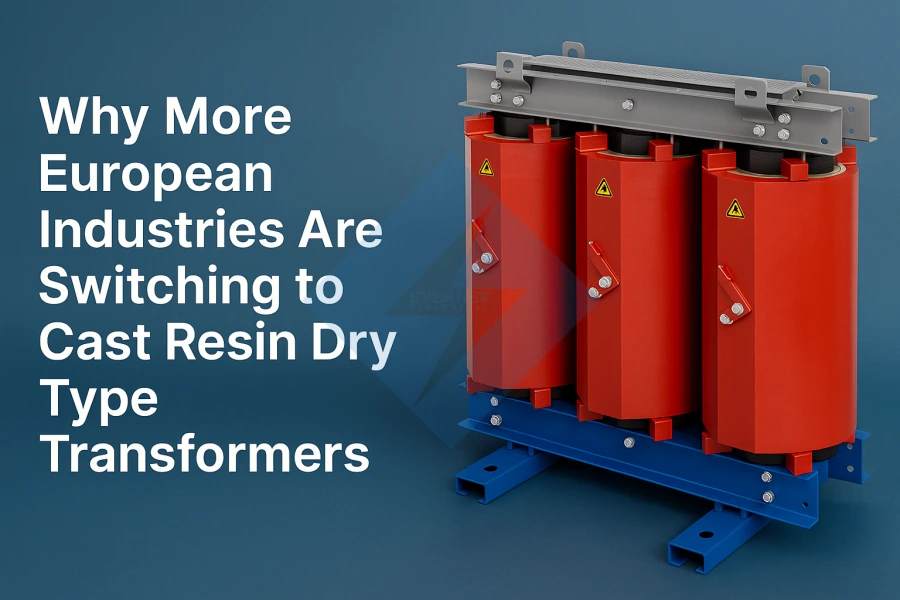Transformers are the backbone of industrial power distribution systems. In Europe, a growing number of industries—from manufacturing plants and data centers to hospitals and commercial complexes—are increasingly choosing Cast Resin Dry Type Transformers (CRDTs) over traditional oil-filled transformers. This shift is driven by evolving regulatory, safety, environmental, and economic factors that demand more efficient, safer, and sustainable solutions.
This article dives deep into why this transition is accelerating, what advantages CRDTs bring, key industry use cases, major manufacturers including Evernew Transformer, and essential technical parameters you need to know.
What Are Cast Resin Dry Type Transformers?
Cast Resin Dry Type Transformers differ fundamentally from oil-filled transformers. Their key feature lies in their insulation system: copper or aluminum windings are encapsulated with epoxy resin, forming a solid, moisture-resistant block. This design brings multiple benefits:
No oil or liquid insulation, eliminating risks of leaks, fire hazards, and environmental contamination.
High resistance to moisture, dust, and chemical pollutants, allowing reliable operation even in demanding environments.
Air cooling replaces oil cooling, leading to simpler, maintenance-friendly designs.
Suitable for indoor and confined spaces, including underground installations.
Compared to oil transformers, CRDTs have shorter installation times, lower fire risk, and significantly reduced environmental impact.
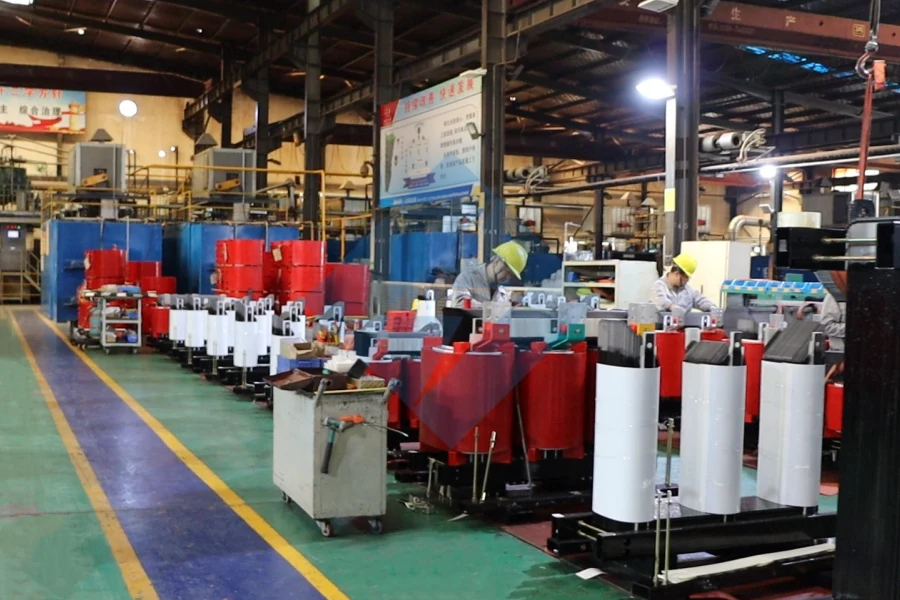
Key Technical Parameters of Cast Resin Dry Type Transformers
Understanding the main technical specifications is crucial when selecting CRDTs for European industrial applications:
Capacity (kVA): Common standard sizes range from 50 kVA up to 10000 kVA, covering light commercial to heavy industrial loads. Typical European installations often use transformers in the 100 kVA to 2500 kVA range.
Voltage Ratings: Medium voltage windings generally range from 3.3 kV up to 36 kV, with low voltage outputs typically at 400 V or 230 V for three-phase and single-phase systems respectively.
Cooling Class: Usually classified as AN (Air Natural), AF (Air Forced), or OFAF (Oil Forced Air Forced) for dry type transformers; cast resin models primarily use AN or AF cooling.
Insulation Level: Designed to meet IEC 60076-11 standards, with insulation classes like Class F (155°C) or Class H (180°C) ensuring thermal stability.
Temperature Rise: Generally limited to 115°C or 150°C, depending on design and standards.
Short Circuit Withstand Strength: CRDTs are engineered to resist mechanical forces during short circuits, critical for industrial safety.
Noise Levels: Cast resin transformers operate with lower noise, typically under 65 dB(A), suitable for indoor installations.
Key Drivers in the European Market
1. Strict Environmental Regulations and Sustainability Goals
European legislation is one of the world’s most rigorous regarding environmental protection:
The Eco Design Directive and EU Green Deal set ambitious targets for energy efficiency and reduction of hazardous substances.
Oil-filled transformers face increasing restrictions due to potential soil and water contamination risks.
CRDTs align perfectly with these directives, offering a non-toxic, eco-friendly alternative.
2. Enhanced Safety and Fire Protection Standards
European standards such as IEC 60076-11 and local fire codes emphasize fire safety, especially for indoor and urban installations.
CRDTs’ non-flammable epoxy resin insulation dramatically reduces fire risks, making them ideal for crowded buildings and sensitive environments.
This safety aspect is crucial for industries like healthcare and data centers, where downtime or fire hazards are unacceptable.
3. Operational Efficiency and Reduced Maintenance
Oil transformers require regular oil sampling, replacement, and leak checks, which add to operational costs.
CRDTs eliminate these demands with oil-free designs, lowering maintenance frequency and costs.
Their robust construction reduces failure rates and increases transformer lifespan.
4. Energy Efficiency and Performance
Losses in CRDTs are generally lower, especially at partial loads, contributing to reduced energy bills.
Compliance with EU Eco Design Tier 2 energy efficiency standards is increasingly mandatory.
CRDTs help companies meet internal sustainability policies and corporate social responsibility (CSR) goals.
Learn More:Top 10 Mistakes to Avoid When Buying Power Transformers (and How to Choose the Right One)
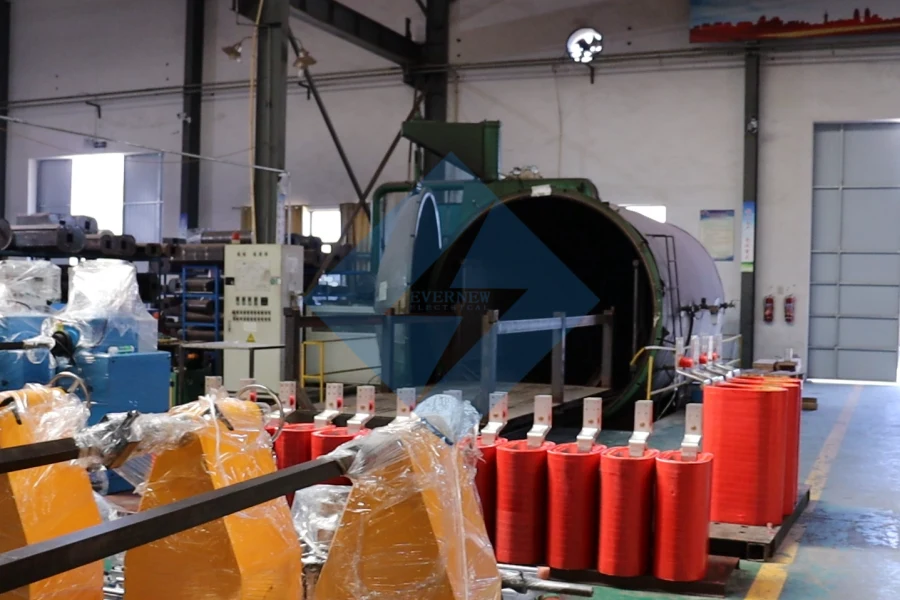
Use Cases Across European Industries
Manufacturing and Heavy Industry
Factories with heavy machinery require transformers that handle fluctuating loads, vibrations, and harsh conditions. CRDTs’ ruggedness and moisture resistance make them optimal, reducing downtime and maintenance interventions.
Data Centers and IT Parks
Power quality and uninterrupted supply are mission-critical. The dry type transformers’ safety and low electromagnetic interference help protect sensitive electronic equipment.
Healthcare Facilities and Hospitals
Hospitals prioritize uninterrupted, safe power with minimal fire risk. CRDTs meet these demands while enabling easier compliance with healthcare building codes.
Commercial Real Estate
Office towers, shopping malls, and residential complexes increasingly prefer dry type transformers for their compact size, quiet operation, and indoor installation capability.
Leading Manufacturers in the European Cast Resin Transformer Market
The market is competitive and driven by innovation, quality, and certification compliance. Some major players include:
Siemens Energy (Germany): Renowned for advanced dry type transformers with global certifications.
ABB (Switzerland): Offers a wide portfolio of energy-efficient, eco-friendly transformers.
Schneider Electric (France): Known for integrating smart grid and energy management technologies.
Nexans (France): Focuses on durable and sustainable power distribution solutions.
Evernew Transformer (China): A fast-growing manufacturer offering high-quality, CE and IEC certified cast resin dry type transformers with competitive pricing and flexible OEM/ODM solutions tailored for European standards.
Why Evernew Transformer?
Established expertise in 6-500 kV power transformers with a focus on dry type models.
Advanced manufacturing facilities located in Nantong, Jiangsu Province, China.
Strict quality control and compliance with IEC 60076, CE, UL, and other relevant certifications.
Offers customized transformer solutions matching European industrial needs.
Provides excellent after-sales support and fast delivery, enabling European industries to reduce lead times and costs.
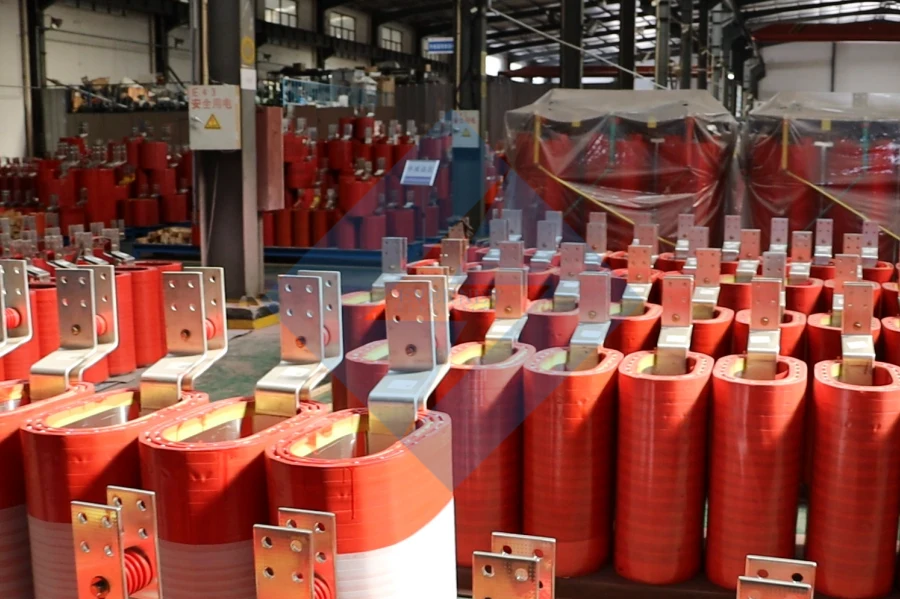
How to Transition from Oil-Filled to Cast Resin Dry Type Transformers
Transitioning requires careful planning:
Assessment of load requirements: Power rating and voltage class must match or exceed current needs.
Installation environment: Dry type transformers require good air circulation; ensure space and ventilation comply with standards.
Standards and Certification: Confirm that transformers meet IEC 60076-11, EN, and local fire safety regulations.
Consult with experts: Collaborate with experienced manufacturers like Evernew to design, test, and deploy suitable models.
Consider lifecycle cost: Factor in not only purchase price but maintenance savings, energy efficiency, and downtime reduction.
Conclusion & Future Outlook
As Europe pushes toward a greener, safer, and more energy-efficient future, Cast Resin Dry Type Transformers are becoming the preferred solution across industries. Their non-flammable, oil-free design offers unmatched safety and environmental benefits while reducing operational costs.
Leading manufacturers, including Evernew Transformer, are enabling this transition by providing certified, reliable, and cost-effective CRDTs designed to meet Europe’s stringent requirements.
Industries investing now in dry type transformers can expect enhanced safety, compliance, and sustainability, securing power distribution infrastructure that meets tomorrow’s challenges.
